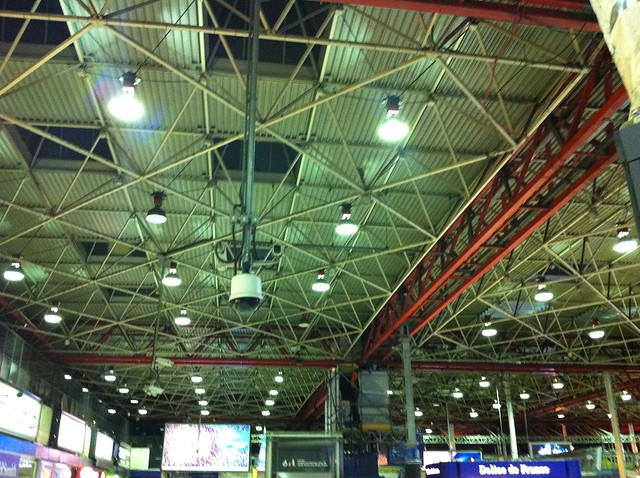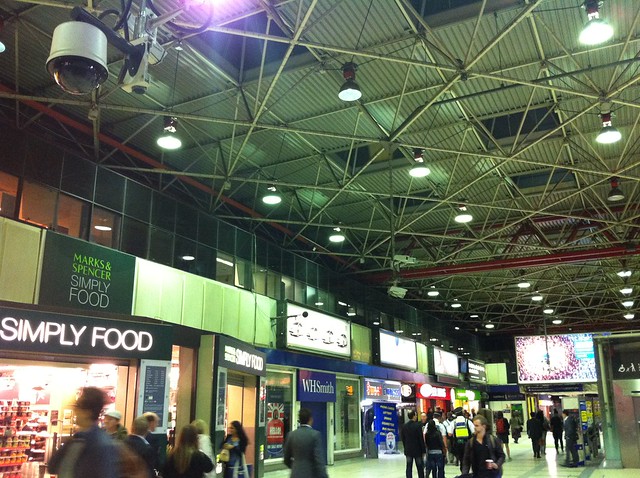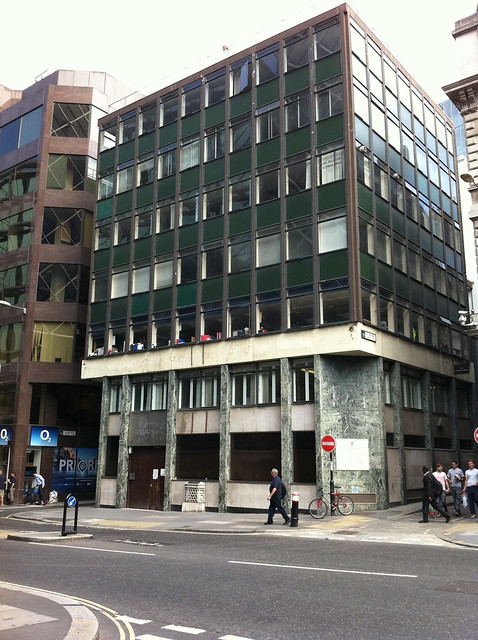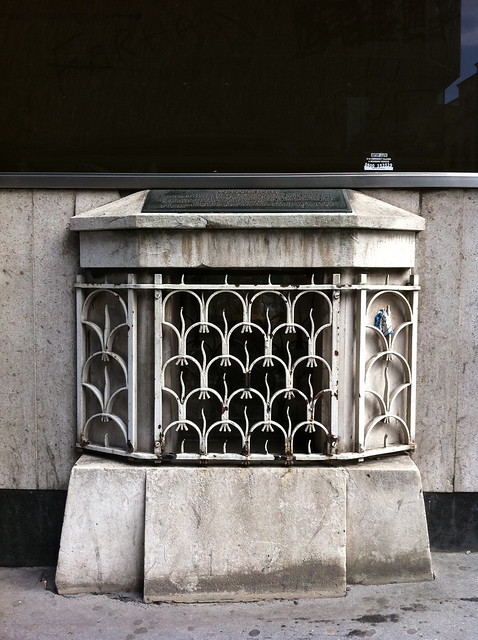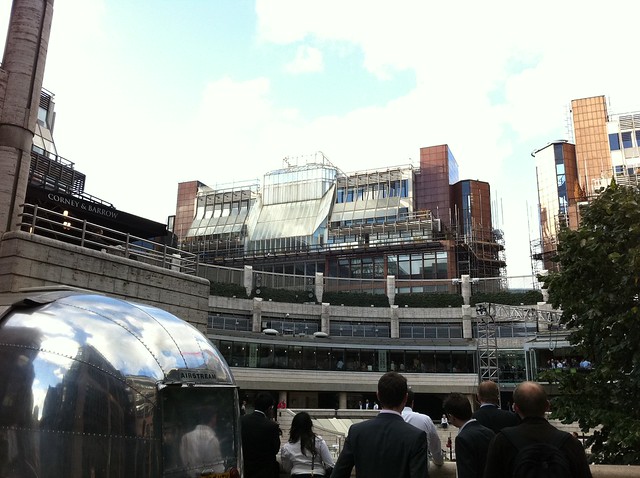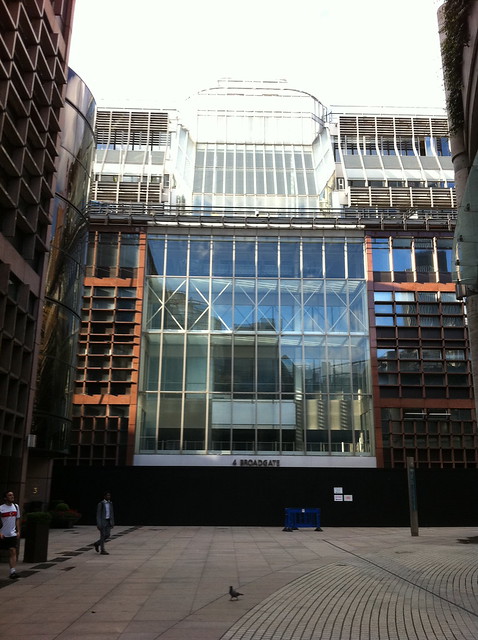The following is a book review that was spiked by a magazine. I thought I'd post it up here rather than letting it go to waste.
"You know more Crowded House songs than you think you do,"said the advertising catchphrase marketing the greatest hits of that long-running antipodean pop group. A simultaneously proud and yet self-deprecating statement, it suggested that there was an inherent invisibility to the band that was leaving their important yet unglamourous contribution to music easily overlooked. 'Continuous Collective', a book published to celebrate fifty years of Building Design Partnership (or BDP), attempts a very similar form of humble self-promotion, making a case for what they consider to be their easily-ignored strengths of flattened hierarchy, multi-disciplinary organisation and most importantly, a non-egotistical approach to design.
"The 'good ordinary' is a noble standard in building, because that implies the greatest good for the greatest number. Surely this is what the design of the total built environment should be about," writes Hugh Pearman, author of the volume, exemplifying the deferential attitude which primarily defines the book. This is a positive spin on what BDP currently represent, which we might uncharitably describe as the best of faceless commercial architecture in the UK. To reaffirm the image of the practice in this way it helps that BDP has the history that it does, having been formed by George Grenfell Baines in 1961 as a socialist cooperative with a practice structure including all design professions, or in Grenfell Baines' words; "Technology and Art linking together in fruitful dialectic relationships!"
To stress this utopian dimension to BDP and attempt to give it historical consistency, an essay contributed by critic Owen Hatherley examines BDP's early years in the context of the Bauhaus and other radical architectural experiments in co-operation. Siting them in the milieu of post-war collectivity, Hatherley sketches a narrative whereby BDP were at the vanguard of British building rather than peripheral workhorses. It helps here that we have such striking early works as the Preston Bus Garage, a lean terminal dominated by ribbed bullhorn profiles, easily the stylistic equal of Paul Rudolph's car park in New Haven, or the Halifax headquarters, a virtuosic smorgasbord of Corbusian brutalism, Miesian tailored box, hi-tech serviced office and proto-deconstructivist rhomboids.

However, like many architects of a certain age BDP have skeletons in their closet, most significantly the swathe of unsustainable out-of-town shopping complexes they built during the 80s. Lee Mallet's essay traces the development of BDP alongside a broad history of British capitalist culture. After the aforementioned welfare state brutalism of the 60s & 70s fell out of favour BDP had to adapt to the brash and vulgar architecture of the Thatcher era, a change that obviously pushed them far out of their comfort zone ("There were no BDP education buildings and scarcely any hospitals […] during the whole of the 1980s" notes Mallett). After suffering badly during the early 90s recession, BDP were among the leading lights of the new Aalto/Erskine influenced pseudo-modernism that will forever be associated with New Labour's pseudo-socialism.

It is the very fact of BDP's resistance to egotistical design that makes it so apposite to see them as a symbol of British architecture as a whole. "If at first the desire was to change the society, the model has also been very successful at adapting to society's changes" Pearman writes ambiguously, and it's a source of sometimes bitter nostalgia to compare BDP's work with itself, whether it be the difference between the confident, bold buildings for the plate-glass Bradford University and the polite and somewhat insipid fair of later buildings such as Sunderland University, or in the slow transition from exciting modernist graphic design to the aesthetic nullities of the pastel coloured sketches and banal renderings that we are used to now. Even contemporary design as consummately executed as the Stirling Prize nominated Liverpool 1 masterplan is tainted by knowledge that the project is a yet another insidious privatisation of public space for the benefit of commercial interests. In the last few pages the projects suddenly develop into massive city-sized schemes, signifying BDP's move into the emerging markets and their potential futures.

BDP have found themselves in the news a number of times recently: they were recently named by the education secretary and playground bully Michael Gove as the most overpaid architects of the slashed BSF scheme (a wildly inaccurate accusation), a sign of the massive changes that British architecture is once again going through, while it was recently revealed that the architects in charge of an anonymous shopping development in Preston which proposes to demolish the Preston Bus Station - recently voted BDP's most popular building - were none other than BDP themselves, a situation of sublime irony. Overall, BDP can tell us a lot more about architectural culture than we might think, and the final impression of the book is that what first appeared to be just a banal pat-on-the-back is actually a intriguing section of British architectural history.



